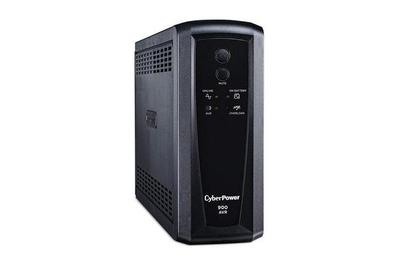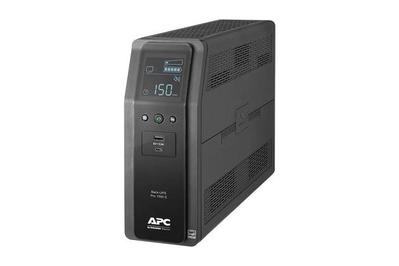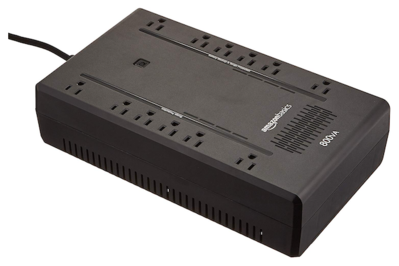Most people can get through a household power outage without much hassle—chances are, by the time you find the spare flashlight batteries and break out the board games, your lights and television will already be back on. But if you want to keep your home Wi-Fi network and some other key electronics up and running in the event of an outage, an uninterruptible power supply (UPS) might be a worthwhile investment. After spending 34 hours interviewing experts, considering more than 100 models under $250, and testing the top candidates, we found that the CyberPower CP900AVR is the best UPS for people who want to back up a few small electronics (such as a modem, router, PC, external hard drive, or game server) during a blackout lasting up to four hours.
Our pick
The CyberPower CP900AVR will cover the basics for most people during common, short-term blackouts. In our tests, it provided enough power to keep a household broadband modem and Wi-Fi router running for four hours, which means you can stay online while the power is off and get in touch with emergency services, follow news and weather changes, or just pass the time on your favorite websites. It requires no setup aside from plugging it in, and it includes automatic voltage regulation—an important feature that some cheaper models lack. Five of its 10 outlets are backed up by a battery, and its compact shape—about the size of a three-ring binder—and its 6-foot cord make it relatively easy to stow under a desk or nightstand.
Key specs:
- Measured run time with a 20 W (modem and router) load: 4 hours
- Measured run time with a 300 W (modem, router, PC, and hard drive) load: 17 minutes
- Measured peak power output: 738 watts
- Measured surge protection: 540.4 let-through volts
- Number of battery-backed outlets: five
- Warranty: three years
Upgrade pick
The APC BR1500MS2 is the most expensive UPS we recommend for most homes or small offices, but it offers a lot of value in the extra features it includes. If you need to provide power to more (or larger) devices at your computer workstation during an outage, it can deliver up to 847 W—we had trouble finding home-office gear powerful enough to overload it in our testing. Like our top pick, it can keep the average modem and router running for up to four hours, giving you more than enough time to save your work and wait for the blackout to end. Roughly the size and shape of a small PC tower, it has 10 outlets in total, six of which it backs up with the battery, and it adds two USB ports (one USB-A and one USB-C) for charging small devices without the need for an extra power adapter. Because it has a pure sine-wave inverter, its power is as smooth as that of a standard wall outlet, making it safe and reliable for even sensitive equipment such as a CPAP machine. Lastly, its backlit screen provides helpful information such as the remaining battery life and the total wattage of the devices plugged into the unit.
Key specs:
- Measured run time with a 20 W (modem and router) load: 4 hours
- Measured run time with a 300 W (modem, router, PC, and hard drive) load: 21 minutes
- Measured peak power output: 847 watts
- Measured surge protection: 593.2 let-through volts
- Number of battery-backed outlets: six
- Warranty: three years
Budget pick
If you’re on a tight budget, the Amazon Basics Standby UPS 800VA is an affordable UPS with the battery and run time of a more expensive model: It can keep a typical router and modem running for up to one and a half hours. Its maximum output is on the lower side (we measured up to 470 W in our testing), but that should be plenty of power for the six battery-backed outlets to support basics such as home Wi-Fi gear. Unlike our other picks, this less expensive model uses standby power management instead of automatic voltage regulation (AVR). That should be fine in most cases, but it’s harder on the battery, and you shouldn’t use it for sensitive AV gear or medical equipment. Plus, Amazon offers only a one-year warranty on its UPS models, in contrast to the three-year warranties that brand-name companies provide.
Key specs:
- Measured run time with a 20 W (modem and router) load: 1.5 hours
- Measured run time with a 300 W (modem, router, PC, and hard drive) load: 6 minutes
- Measured peak power output: 470 watts
- Measured surge protection: 402.8 let-through volts
- Number of battery-backed outlets: six
- Warranty: one year







